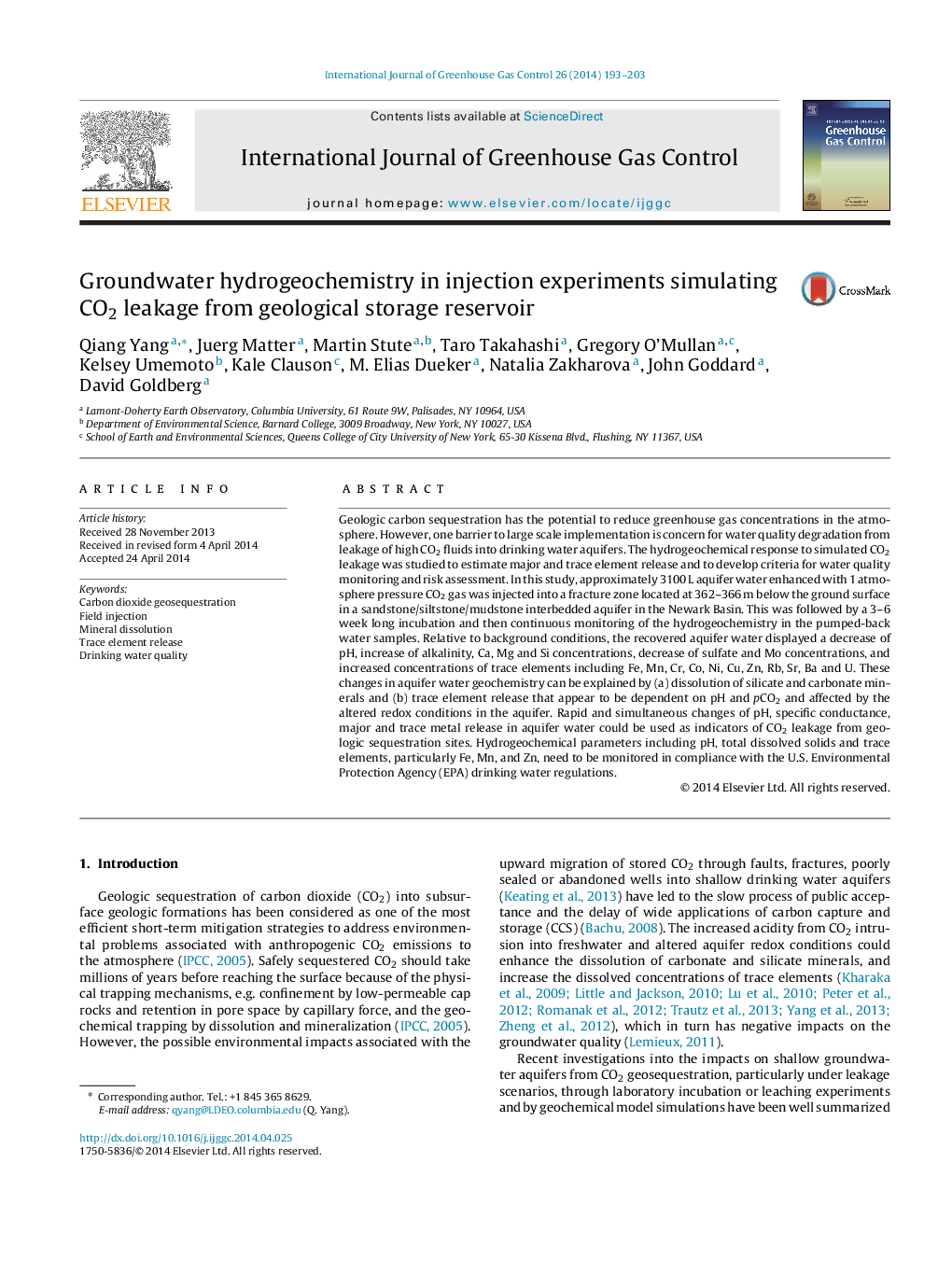| کد مقاله | کد نشریه | سال انتشار | مقاله انگلیسی | نسخه تمام متن |
|---|---|---|---|---|
| 1743118 | 1521995 | 2014 | 11 صفحه PDF | دانلود رایگان |
عنوان انگلیسی مقاله ISI
Groundwater hydrogeochemistry in injection experiments simulating CO2 leakage from geological storage reservoir
دانلود مقاله + سفارش ترجمه
دانلود مقاله ISI انگلیسی
رایگان برای ایرانیان
موضوعات مرتبط
مهندسی و علوم پایه
علوم زمین و سیارات
فرآیندهای سطح زمین
پیش نمایش صفحه اول مقاله

چکیده انگلیسی
Geologic carbon sequestration has the potential to reduce greenhouse gas concentrations in the atmosphere. However, one barrier to large scale implementation is concern for water quality degradation from leakage of high CO2 fluids into drinking water aquifers. The hydrogeochemical response to simulated CO2 leakage was studied to estimate major and trace element release and to develop criteria for water quality monitoring and risk assessment. In this study, approximately 3100Â L aquifer water enhanced with 1 atmosphere pressure CO2 gas was injected into a fracture zone located at 362-366Â m below the ground surface in a sandstone/siltstone/mudstone interbedded aquifer in the Newark Basin. This was followed by a 3-6 week long incubation and then continuous monitoring of the hydrogeochemistry in the pumped-back water samples. Relative to background conditions, the recovered aquifer water displayed a decrease of pH, increase of alkalinity, Ca, Mg and Si concentrations, decrease of sulfate and Mo concentrations, and increased concentrations of trace elements including Fe, Mn, Cr, Co, Ni, Cu, Zn, Rb, Sr, Ba and U. These changes in aquifer water geochemistry can be explained by (a) dissolution of silicate and carbonate minerals and (b) trace element release that appear to be dependent on pH and pCO2 and affected by the altered redox conditions in the aquifer. Rapid and simultaneous changes of pH, specific conductance, major and trace metal release in aquifer water could be used as indicators of CO2 leakage from geologic sequestration sites. Hydrogeochemical parameters including pH, total dissolved solids and trace elements, particularly Fe, Mn, and Zn, need to be monitored in compliance with the U.S. Environmental Protection Agency (EPA) drinking water regulations.
ناشر
Database: Elsevier - ScienceDirect (ساینس دایرکت)
Journal: International Journal of Greenhouse Gas Control - Volume 26, July 2014, Pages 193-203
Journal: International Journal of Greenhouse Gas Control - Volume 26, July 2014, Pages 193-203
نویسندگان
Qiang Yang, Juerg Matter, Martin Stute, Taro Takahashi, Gregory O'Mullan, Kelsey Umemoto, Kale Clauson, M. Elias Dueker, Natalia Zakharova, John Goddard, David Goldberg,